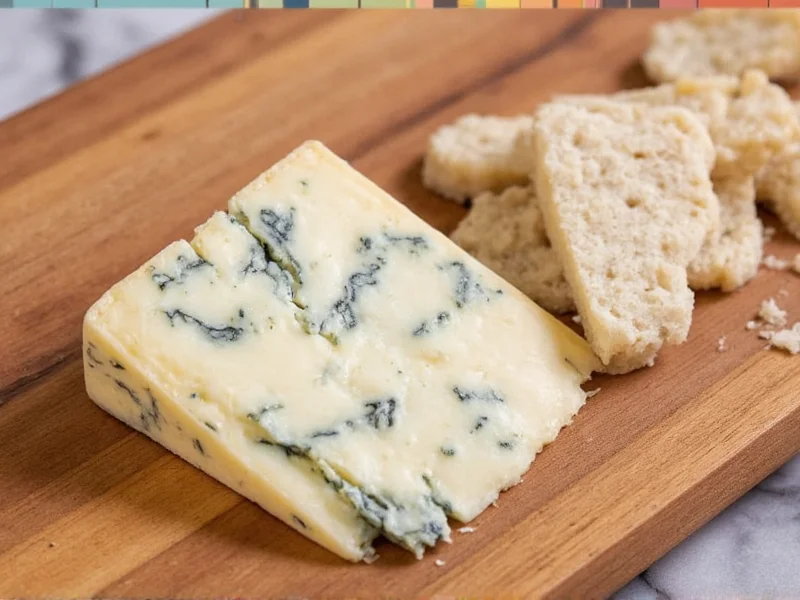Blue cheese, with its distinctive veined appearance and bold, tangy flavor, presents a unique pairing challenge that rewards thoughtful selection. Unlike milder cheeses, blue varieties like Roquefort, Gorgonzola, and Stilton demand accompaniments that can stand up to their intense character while creating harmonious flavor combinations. Understanding what pairs with blue cheese properly transforms a simple cheese platter into a sophisticated culinary experience that highlights the cheese's complex notes of earthiness, saltiness, and subtle sweetness.
Wine Pairings for Blue Cheese
When considering what wine goes with blue cheese, sweet and fortified wines provide the ideal counterpoint to blue cheese's saltiness. The sugar content in these wines balances the cheese's sharpness while their acidity cuts through the richness.
Port wine represents one of the classic blue cheese pairings, particularly with English Stilton in the traditional 'Stilton and Port' combination. The rich berry flavors and sweetness of ruby port complement blue cheese's saltiness perfectly. For a more complex experience, try a vintage port with aged Roquefort.
Sweet white wines like Sauternes or late-harvest Riesling offer another excellent option for blue cheese and wine pairing. The honeyed notes and vibrant acidity cleanse the palate between bites. Don't overlook shiraz or zinfandel if you prefer reds—these full-bodied options have enough fruitiness to stand up to blue cheese without clashing.
Beer Pairings That Complement Blue Cheese
Craft beer pairings with blue cheese have gained popularity as enthusiasts discover how well certain styles complement this bold cheese. The key is selecting beers with sufficient body and flavor intensity to match the cheese.
Imperial stouts and porter beers work remarkably well with blue cheese, as their roasted malt flavors and creamy texture balance the cheese's saltiness. The coffee and chocolate notes in these dark beers create a surprisingly harmonious pairing that many consider superior to wine for certain blue cheeses.
Barleywines represent another excellent choice for blue cheese beer pairings. Their rich, malty sweetness and substantial alcohol content cut through the cheese's intensity while enhancing its nutty undertones. For a more adventurous pairing, try a bourbon barrel-aged stout with a creamy Gorgonzola Dolce.
Perfect Food Accompaniments for Blue Cheese
Understanding what fruits go well with blue cheese reveals some classic combinations that have stood the test of time. Fresh and dried fruits provide the necessary sweetness to balance blue cheese's saltiness while adding contrasting textures.
| Food Category | Best Options | Why It Works |
|---|---|---|
| Fruits | Figs, pears, apples, grapes, dried apricots | Sweetness balances saltiness; acidity cuts through richness |
| Nuts | Walnuts, pecans, almonds | Earthy flavors complement cheese; crunchy texture contrasts creaminess |
| Sweet Elements | Honey, maple syrup, fruit preserves | Creates the classic sweet-salty contrast that enhances blue cheese |
| Bread/Crackers | Walnut bread, seeded crackers, baguette slices | Substantial base that won't crumble; complements flavor profile |
The blue cheese and honey pairing stands as one of the most universally appreciated combinations. Drizzling high-quality honey—particularly chestnut or wildflower varieties—over a wedge of creamy blue cheese creates an instant gourmet experience. For an elevated presentation, try honeycomb rather than liquid honey to add textural interest.
When selecting what crackers to serve with blue cheese, choose substantial options that won't crumble under the cheese's weight. Seeded crackers, walnut bread, or plain baguette slices provide the ideal neutral base that won't compete with the cheese's bold flavor. Avoid overly salty crackers that might amplify the cheese's saltiness unpleasantly.
Creating an Exceptional Blue Cheese Board
Assembling what could be considered the perfect blue cheese platter requires careful consideration of balance and variety. A well-constructed board should offer multiple pairing options to showcase how different elements interact with the cheese.
Start with one or two blue cheese varieties of different intensities—a milder Gorgonzola Dolce alongside a stronger Roquefort allows guests to experience the spectrum of blue cheese flavors. Arrange the cheeses from mildest to strongest, moving clockwise around the board.
Include three to four fruit options, such as fresh pear slices, dried figs, and a small dish of honey. Add a selection of nuts, preferably toasted to enhance their flavor. For savory elements, consider adding prosciutto-wrapped melon or cornichons for contrast. Always provide multiple utensils to prevent flavor transfer between cheeses.
Temperature matters significantly when serving blue cheese. Remove cheeses from refrigeration at least 30-60 minutes before serving to allow them to reach optimal serving temperature (around 60-65°F or 15-18°C), which enhances their flavor complexity and creamy texture.
Common Blue Cheese Pairing Mistakes to Avoid
Even experienced entertainers sometimes make errors when pairing blue cheese. Understanding these pitfalls helps create more successful combinations.
One frequent mistake involves pairing blue cheese with overly delicate wines that get overwhelmed by the cheese's intensity. Light white wines like pinot grigio or sauvignon blanc typically don't stand up well to bold blue cheeses. Similarly, avoid pairing blue cheese with very young, tannic reds that can create unpleasant metallic flavors when combined with the cheese's saltiness.
Another common error is serving blue cheese too cold, which suppresses its complex flavors and makes the texture unpleasantly hard. Always allow sufficient time for the cheese to come to proper serving temperature.
When creating traditional blue cheese accompaniments, avoid overwhelming the cheese with too many competing flavors. A blue cheese board should showcase the cheese as the star, with accompaniments playing supporting roles that enhance rather than dominate.











 浙公网安备
33010002000092号
浙公网安备
33010002000092号 浙B2-20120091-4
浙B2-20120091-4